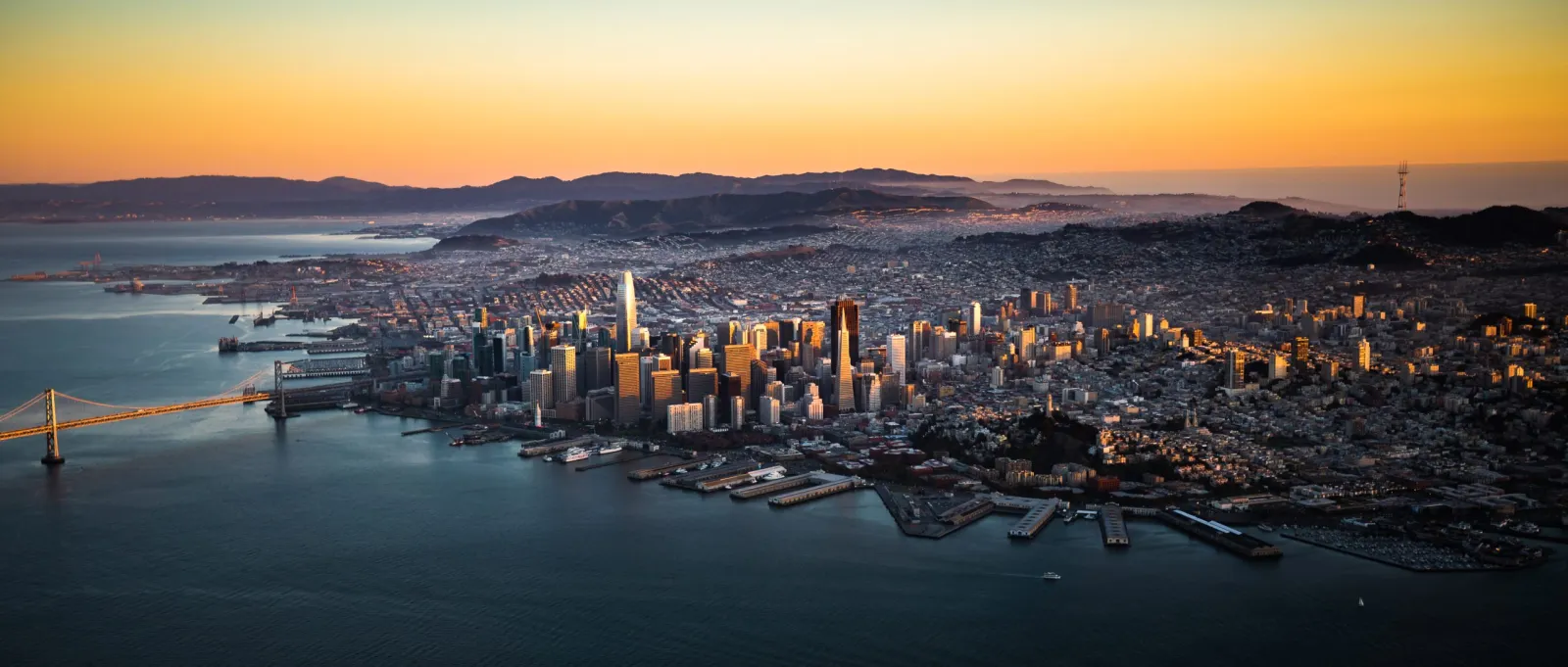News & Awards.
including honors for “Best Mixed Use,”
“Best Office,” and “Best Historic Rehabilitation”.

The San Francisco Downtown Development Corporation (SFDDC) has quietly emerged as one of the most influential forces behind the city’s downtown revival efforts, securing more than $40 million in initial commitments and playing a pivotal role in Mayor Daniel Lurie’s ambitious “Heart of the City” executive directive unveiled last week.
The SFDDC mobilizes private capital and civic expertise to fund and implement high-impact initiatives that jumpstart long-term economic development in downtown San Francisco, working in close coordination with the City of San Francisco and business, labor, and civic leaders to transform downtown into a thriving destination that drives economic growth and strengthens San Francisco’s cultural fabric.
The organization’s founding board reads like a who’s who of San Francisco’s business and philanthropic elite. Board Chair David Stiepleman, co-founder and co-president of the global investment firm Sixth Street, leads a distinguished group that includes Sam Cobbs, CEO of Tipping Point Community (the nonprofit founded by Mayor Lurie in 2005); Bob Fisher, chair of the San Francisco Museum of Modern Art; Rebecca Foster, founding CEO of the San Francisco Accelerator Fund; Chris Larsen, co-founder and executive chairman of Ripple; Olga Miranda, president of Service Employees International Union Local 87; and Meg Whitman, former CEO of eBay and former U.S. Ambassador to Kenya.
The board recently expanded to include Chris Meany, CEO of Wilson Meany, who brings decades of experience shaping transformative projects such as Treasure Island, Yerba Buena Island, and San Francisco’s iconic Ferry Building. The organization just appointed Shola Olatoye as its inaugural Chief Executive Officer, signaling its transition from formation to active implementation.
The SFDDC serves as a central organizing hub for coordination, speed, and execution, working to identify, fund, and implement high-priority initiatives that make downtown safer, cleaner, and more welcoming for residents, workers, businesses, and visitors. In parallel, the organization is identifying long-term public financing tools to support downtown San Francisco’s health and evolution for generations to come.
The corporation’s influence became evident during a high-profile gathering three weeks ago at the offices of TMG Partners, one of San Francisco’s prominent real estate firms. According to sources familiar with the meeting, the event served dual purposes: coordinating downtown revitalization efforts and fundraising for the SFDDC’s expanding initiatives. The gathering included SF Chief of Housing & Economic Development Ned Segal and Mayor Lurie himself, underscoring the organization’s direct line to city leadership.
In recent years, downtown San Francisco has faced significant challenges—from public safety and street cleanliness to increased vacancies and shifting work patterns. Office vacancies and reduced foot traffic have decreased tax revenue, contributing to the city’s financial challenges. The area’s struggles are particularly acute given that downtown San Francisco is unique in its architectural beauty, high density, transit connectivity, and economic significance.
The timing of the SFDDC’s formation coincides with Mayor Lurie’s administration, which took office in January 2025 with downtown revitalization as a central priority. In his first eight months, Lurie has implemented several initiatives that complement the SFDDC’s mission, including the San Francisco Police Department Hospitality Zone Task Force, which has contributed to a more than 40 percent reduction in crime in Union Square and the Financial District.
The mayor’s efforts appear to be yielding early results. Hotel room bookings associated with Moscone Center events have increased by more than 60 percent since 2024, office leasing activity has picked up, and workers are returning to San Francisco offices at higher rates than in other major cities, according to city data.
The SFDDC’s $40 million in initial commitments represents just the beginning of what organizers envision as a multi-year, multi-hundred-million-dollar effort. The funds will support everything from streetscape improvements to small business development funds, with specific projects targeted for Powell Street, Fourth Street, and Embarcadero Plaza.
Mayor Lurie’s administration has implemented several policy reforms to support the SFDDC’s mission, including streamlined permitting processes through the PermitSF initiative and new legislation with the Board of Supervisors to facilitate office-to-residential conversions. The city will also launch a Downtown Revitalization Financing District early next year to make office-to-residential conversions easier.
The organization’s strategy focuses on four key areas that align with Mayor Lurie’s “Heart of the City” directive: housing development through office-to-residential conversions, business attraction and retention, public space activation, and educational institution expansion downtown.
The SFDDC also researches and advances public financing vehicles in partnership with city leadership to support San Francisco’s long-term health and vibrancy. This dual approach of immediate private funding and long-term public financing mechanisms could serve as a model for other cities grappling with similar downtown challenges.
The organization plans to work closely with existing community benefit districts and other civic groups to coordinate efforts and avoid duplication of services. This collaborative approach reflects lessons learned from previous downtown revitalization efforts in other cities that failed due to fragmented leadership and competing interests.
As the SFDDC continues to raise funds and implement projects under the leadership of CEO Shola Olatoye, its success will be closely watched by urban planners and municipal leaders nationwide. The organization’s ability to mobilize private capital for public benefit while maintaining accountability to both investors and community stakeholders will likely determine whether San Francisco’s downtown revival efforts succeed where others have struggled.


